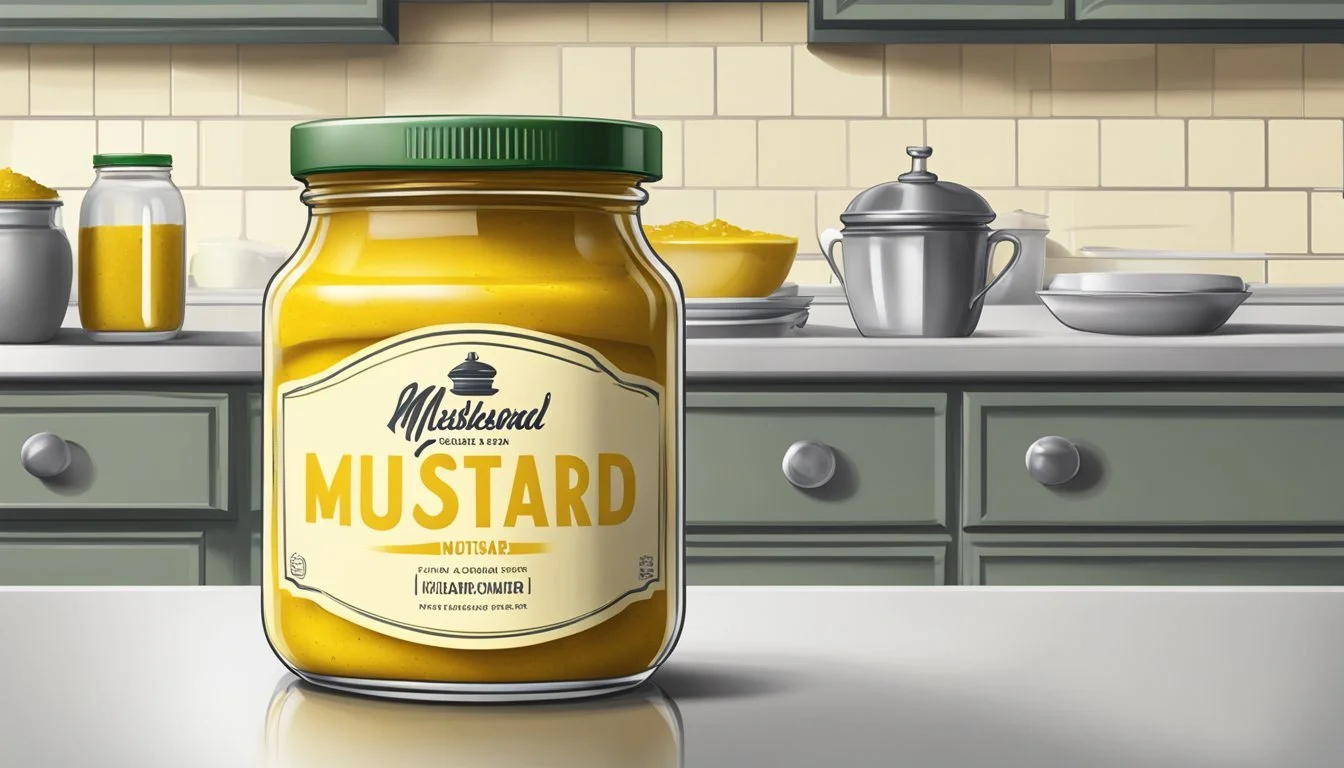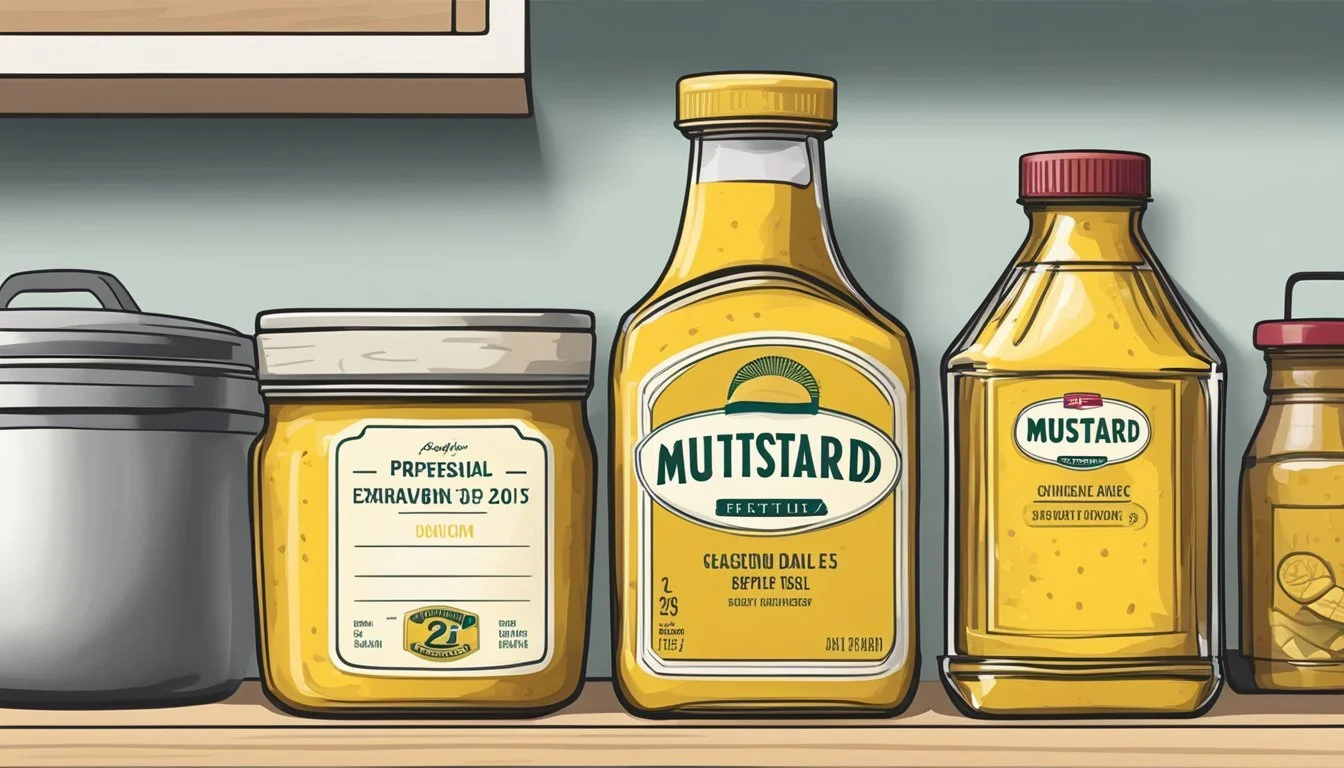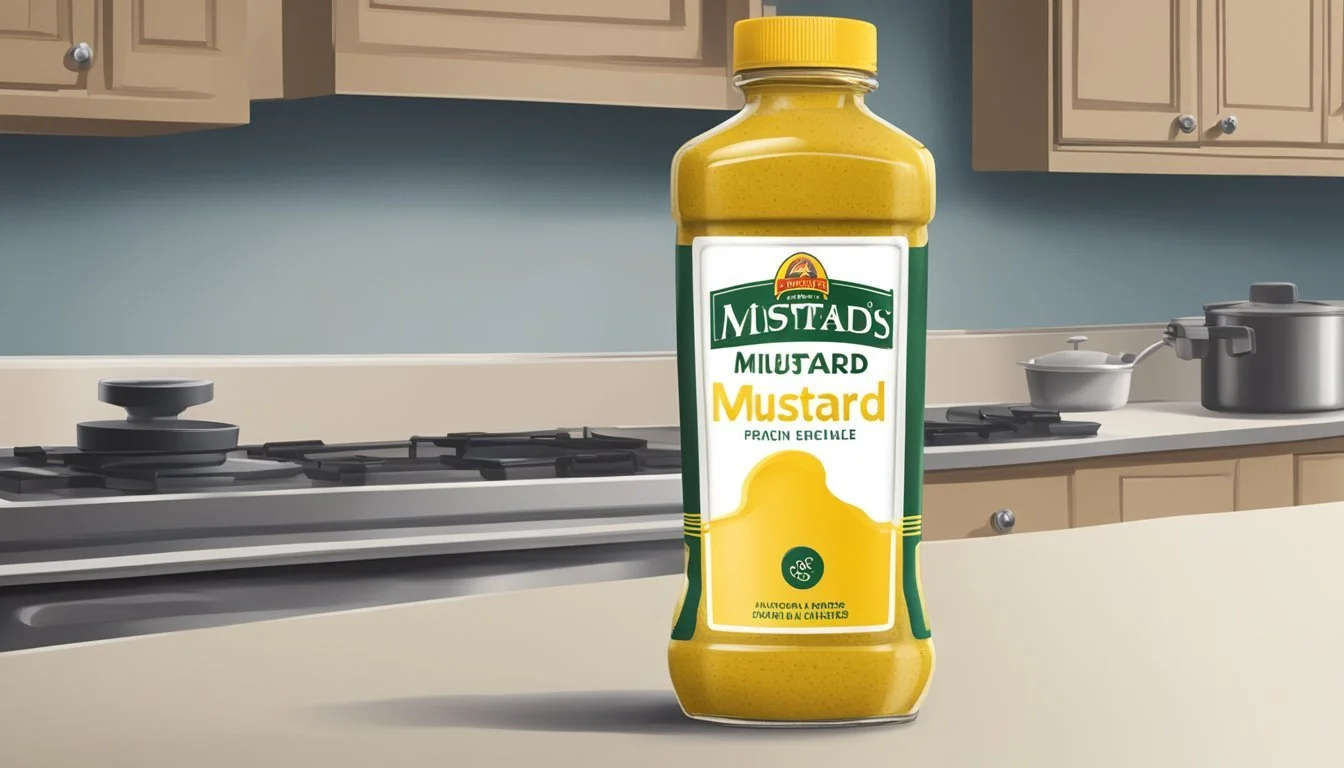Does Mustard Go Bad?
Understanding Shelf Life and Spoilage Signs
Mustard is a widely used condiment made from the seeds of the mustard plant, vinegar, water, and other ingredients such as salt and spices. It is known for its tangy flavor and is commonly applied to sandwiches, hot dogs, and as an ingredient in many recipes. Mustard is also noted for its long shelf life, which is a result of its acidic nature. The acidity acts as a natural preservative, inhibiting the growth of spoilage-causing microorganisms.
While mustard does not spoil easily, it isn't entirely immune to degradation over time. An unopened bottle of mustard can last for several years when stored in a cool, dry pantry, retaining its quality until it's opened. However, upon opening, mustard should be kept refrigerated where it can maintain its best quality for up to a year. The signs of mustard going bad include a noticeable change in color, an unpleasant smell, or a change in texture, indicating it's time to discard the condiment.
Proper storage is key in preserving the freshness of mustard. Refrigeration slows down any potential spoilage process and helps in maintaining the condiment's flavor and texture. It is also important to always use clean utensils when serving mustard to prevent the introduction of contaminants that could accelerate spoilage. Mustard may lose its pungency over time, but if stored correctly and checked periodically for quality, it will remain safe and flavorful for a considerable amount of time.
Understanding Mustard
Mustard is a versatile condiment with various types, each with a unique composition affecting its flavor and acidity. Below is a deeper look into the types of mustard, their key ingredients and acidity, and the flavor profiles they offer.
Types of Mustard
Mustard comes in many forms, catering to different culinary traditions and taste preferences:
Yellow Mustard: Also known as American mustard, this type is mild with a bright color.
Dijon Mustard: Originating from France, it's known for a sharp, tangy flavor.
Honey Mustard: A blend of sweetness and tanginess, combining mustard with a sweet honey additive.
Whole Grain Mustard: Contains partially ground seeds for a textured and robust taste.
Chinese Mustard: Offers a spicy kick, usually hotter than other varieties.
Ingredients and Acidity
The primary ingredients in mustard typically include:
Mustard Seeds: The base of all mustard types.
Vinegar: Contributes to shelf life and acidity.
Water: Used to adjust consistency.
Spices: Such as turmeric in yellow mustard, adding to taste and color.
Salt: Enhances flavor and acts as a preservative.
The acidity of mustard, mainly from vinegar, helps preserve it and contributes to its tangy flavor.
Flavor Profiles
Mustard's flavor is shaped by its components and can range from:
Tangy: A result of the vinegar and spices blend.
Sweet: Notably in honey mustard, which has a significant sweet profile.
Spicy: As found in Chinese mustard, due to a higher concentration of mustard seeds.
Mustard's versatility makes it a staple in kitchens worldwide, offering flavors from subtle to intense.
Storage Guidelines
The longevity and quality of mustard are highly contingent on the appropriate storage conditions. Ensuring proper container sealing, choosing the right storage environment, and understanding the factors affecting shelf life are critical to maintaining mustard's freshness and flavor.
Proper Storage Methods
To preserve the quality of mustard, it must be stored in a tightly sealed container to prevent contamination and moisture ingress. Storing mustard in a cool, dry place such as a pantry or cupboard shields it from heat and light, which can degrade the condiment over time.
Refrigeration and Freezing
After opening, mustard should be refrigerated to extend its shelf life. Even though freezing is not recommended, as it can alter the texture and potency, the refrigeration is essential. In the fridge, make sure the mustard jar or container is sealed properly after each use to maintain its flavor and prevent spoilage.
Shelf Life Determinants
Several factors determine the shelf life of mustard, including the expiration date, the best by date, and the storage conditions. Mustard's inherent acidity contributes to its lasting power. In the pantry, unopened mustard can remain fresh for up to three years, while in the refrigerator, an opened container will generally retain quality for about a year. Always observe changes in color, texture, or smell to judge its viability.
Spoilage Indicators
When assessing whether mustard has gone bad, it is essential to check visual, olfactory, and textural qualities for spoilage indicators, as well as signs of contamination that could pose health risks.
Visual and Textural Changes
Mustard that is fresh typically has a consistent color and texture. Signs of spoilage are often first noticed when these start to change. Look out for:
Discoloration: A fading or darkening of mustard's original hue can indicate spoilage.
Texture: If the mustard becomes excessively thick, clumpy, or watery, it may have started to spoil.
Odor and Flavor Alterations
The aroma and taste of mustard are pronounced and should be zesty with a hint of tang from the vinegar base. Spoilage can be detected by:
Odor: A sour or off smell that deviates from its usual vinegar-based zest is a red flag.
Flavor: A noticeable decrease in flavor intensity or an unpleasant taste suggests the mustard may no longer be good.
Contamination and Bacterial Growth
Mustard has a high acidity which hinders bacteria and mold growth, but it is not immune. Be mindful of:
Mold Growth: Any visible mold, which could appear as fuzzy or slimy spots, means the mustard should be discarded.
Bacterial Contamination: While bacteria may not always be visible, the presence of contaminants like water can facilitate bacterial growth, affecting the safety of the mustard.
Mustard Longevity
Understanding the lifetime of mustard involves considering its commercial manufacturing versus homemade preparation, its inherent anti-bacterial qualities due to acetic acid, and proper storage techniques.
Commercial vs. Homemade Mustard
Commercially produced mustard typically lasts longer than its homemade counterpart due to the presence of preservatives. Unopened commercial mustard can last for approximately three years in the pantry. Once opened, it remains fresh for about a year when refrigerated. On the other hand, homemade mustard, which may lack preservatives, should generally be consumed within a month of making it, provided that it is stored in the refrigerator.
Anti-bacterial Properties
The acidic nature of mustard, especially due to vinegar, or alternatively wine or other acids, lends it anti-bacterial properties. Vinegar's acetic acid is effective in inhibiting bacterial growth, which contributes to the condiment's extended shelf life. Whether commercial or homemade, the anti-bacterial characteristic is predominantly due to this acidic content.
Extending Mustard's Lifespan
Proper storage is crucial in extending the shelf life of mustard. The following are key considerations for preserving mustard:
Keep it refrigerated: Once opened, mustard should be stored in the refrigerator.
Use clean utensils: To prevent contamination, always use clean utensils when handling mustard.
Tight seal: Ensure the mustard container is tightly sealed after each use.
With these practices, the longevity of mustard may be maximized for safety and flavor preservation.
Usage Tips
To maintain the quality and longevity of mustard as a condiment, consider both the maintenance of its freshness and the cleanliness of the utensils used with it. These measures ensure the flavor remains robust and the product safe for consumption.
Ensuring Freshness
Proper storage is the cornerstone of keeping mustard at its best. After opening, mustard should be sealed tightly and stored in the refrigerator. The cool environment helps preserve the vinegar content, which is essential for both taste and preservation. One should always check for any signs of spoilage, such as a change in color or taste, before use.
Utensil Hygiene
Using clean utensils every time mustard is served cannot be overstressed. Contamination can occur when utensils used with other foods introduce bacteria into the mustard container. These actions can compromise the flavor and safety of the condiment. Therefore, it's imperative to use clean utensils for serving to prevent cross-contamination and ensure the mustard remains in its best condition.
Safety and Health Considerations
When assessing the safety and health implications of consuming mustard, it is important to consider both the best-by and expiration dates and to recognize the signs of spoilage. Mustard, due to its acidity, can last well beyond these dates if stored properly. However, one should still remain vigilant for indications of spoilage to ensure the mustard consumed is not only flavorful but also safe.
Consuming Expired Mustard
Mustard typically has a long shelf life and can often be consumed safely past its best-by date. This date is an indicator of optimal quality rather than safety. Therefore, mustard may not be harmful after this date but could have reduced flavor and potency. It is not uncommon for mustard to remain good for several years past its best-by date when unopened and stored in ideal conditions.
Signs of Spoiled Mustard
To determine if mustard has gone bad, one should look for several key indicators:
Color: If there is a noticeable dullness or discoloration, the mustard may be past its prime.
Texture: Any deviation from the original consistency, such as drying out or becoming too liquid, can be a sign of spoilage.
Smell: An off smell or rancid odor is a clear warning sign that the mustard should not be consumed.
Mold: The presence of mold is a definitive indicator that the mustard is no longer safe to eat.
These signs can help ensure that one avoids consuming spoiled mustard, which could potentially lead to foodborne illness.
Conclusion
Mustard typically has a long shelf life due to its high acidity levels, which act as a preservative. Storage conditions are pivotal in maintaining mustard's longevity. Store it in a cool, dark place and always seal tightly after use to enhance its shelf life.
Signs of spoilage include:
Odor: A strong, unpleasant smell.
Appearance: Mold-like growths.
Texture: Separation of liquid, indicating deterioration.
Safety is crucial when consuming mustard. If the product shows spoilage signs, it should be discarded to avoid any health risks. Consuming spoiled mustard may lead to foodborne illnesses.
Flavor may diminish over time, even if the mustard is not spoiled. Freshness correlates with flavor potency; thus, for the best taste, one should use mustard within its indicated shelf life.
When stored properly, mustard remains a safe and flavorful condiment for a surprisingly long duration—often extending past its best-by date. However, it is essential to remain vigilant for changes in smell, texture, and appearance that signal it is no longer suitable for consumption.







